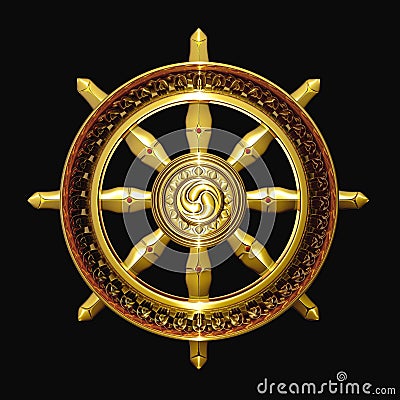ဗုဒၶဘာသာဆိုတာဘာလဲ သူငယ္ခ်င္းေတြ တျခားသူေတြကို အတိုခ်ဳပ္ရွင္းျပလို႕ရေအာင္ဆိုျပီး စာအုပ္စာတမ္းေလးေတြရွာၾကည့္တဲ့ အခါ စာအုပ္ေလးတစ္အုပ္ေတြ႕မိရပါတယ္။ ဓမၼစကၠဦးေမာင္ေမာင္ ဘာသာျပန္ထားတဲ့ ``ဗုဒၶ၀ါဒဆိုတာ ဘာလဲ´´ဆိုတဲ့စာအုပ္ေလးပါ။ လြန္ခဲ့တဲ့ သံုးေလးႏွစ္ေလာက္ကေတာ့ ျမန္မာျပန္ထားတာေတြကို ကူးယူျပီး သူငယ္ခ်င္းတို႕ကိုေ၀မွ်ဖူးပါတယ္။ အခုေတာ့ အဂၤလိပ္လို ဖတ္ခ်င္ၾကတဲ့ သူငယ္ခ်င္းအခ်ိဳ႕အတြက္ ျပန္လည္ကူးယူေဖာ္ျပလိုက္ပါတယ္ေနာ္။
(1) What
Is Buddhism?
The name Buddhism comes from the word “budhi” which means ‘to wake up’ and thus
Buddhism is the Philosophy of awakening.
This philosophy has its origins in the
experience of the man Siddhattha Gotama, known as the Buddha, Who was himself
awakened at the age of 35. Buddhism is now 2500 years old and has about 300
million followers worldwide.
Until a hundred years ago, Buddhism was
mainly an Asian philosophy but increasingly it is gaining adherents is Europe,
Australia and America.
(2) So
Buddhism is Just a Philosophy?
The word philosophy comes from two words “philo” which means ‘love’ and ‘sophia’ which means ‘wisdom’. So
philosophy is the love of wisdom or love and wisdom, both meanings describing
Buddhism perfectly.
Buddhism teaches that we should try to
develop our intellectual capacity to the fullest so that we can understand
clearly.
It also teaches us to develop love and
kindness so that we can be like a true friend to all beings. So Buddhism is a
philosophy but not just a philosophy. It
is the supreme philosophy.
(3) Who
was the Buddha?
In the year 563 B.C. a baby was born into a
royal family in northern India. He grew up in wealth and Luxury but eventually
found that worldly comforts and serenity do not guarantee happiness.
He was deeply moved by the suffering he saw
all around – and resolved to find the key to human happiness.
When he was 29 he left his wife and child
and set off to sit at the feet of the great religious teachers of the day to
learn from them.
They taught him much but none really knew
the cause of human suffering and how it could be overcome.
Eventually, after six years study and
meditation he had an experience in which all ignorance fell away and he
suddenly understood.
From that day onwards, he was called the Buddha, the Awakened One.
He lived for another 45 years in which time
he travelled all over the northern India teaching others what he had
discovered.
His compassion and patience were legendary
and he made thousands of followers. In his eightieth year, old and sick, but
still happy and at peace, he finally died.
(4) The
Buddha is dead so how can he help us?
Faraday, who discovered
electricity, is dead, but what he discovered still help us.
Luis
Pasteur
who discovered the cures for so many diseased is dead, but his medical
discoveries still save lives.
Leonardo
da Vinci
who created masterpieces of art is dead, but what he created can still uplift
and give joy.
Noble
men
and heroes may have been dead for centuries but when we read of their deeds and
achievements, we can still be inspired to act as they did.
Yes, the Buddha is
dead, but 2500 years later his teachings still help people, his example still
inspires people, his words still change lives, only a Buddha could have such
power centuries after his death.
(5) Was
the Buddha a God?
No, he was not. He did not claim that he was
a god, the child of a god or even the messenger from a god.
He was a man who perfected himself and
taught that if we followed his example, we could perfect ourselves also.
(6) I
have heard people say that Buddhists Worship Idols.
Such statements only reflect the
misunderstanding of the persons who make them. The dictionary defines an idol
as – “an image or statue worshipped as a god.”
As we have seen, Buddhists do not believe
that the Buddha was a god, so how could they possibly believe that a piece of
wood or metal is a god?
All religions use symbols to express various
concepts. In Taoism, the Ying-Yang is used to symbolize the harmony between
opposites.
In Sikhism, the sword is used to symbolize
spiritual struggle. In Christianity, the fish is used to symbolize Christ’s
presence and the cross is used to symbolize his sacrifice.
And in Buddhism, the statue of the Buddha is
used to symbolize human perfection. The statue of the Buddha also reminds us of
the human dimension in Buddhist teaching, the fact that Buddhism is mancentred,
not god-centred, that we must look within not without to find perfection and
understanding.
So to
say that Buddhist worship idols is not correct.
Buddhists do not worship and image expecting
worldly or spiritual favours, but pay their reverence to what it represents.
Written by Ven Shravasti Dhammika
To be continued…..







No comments:
Post a Comment